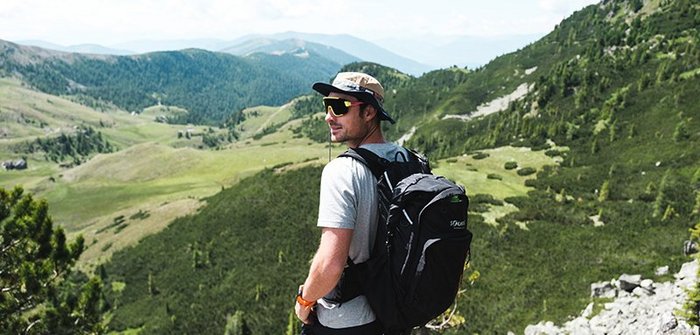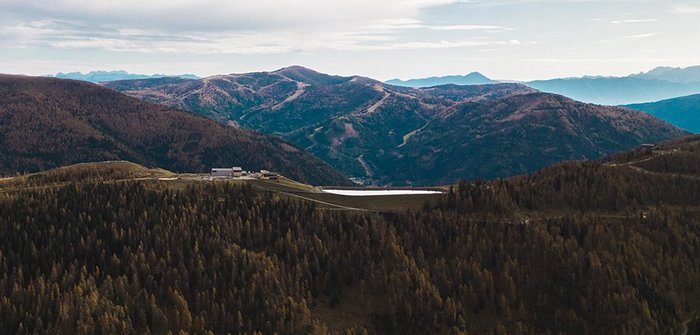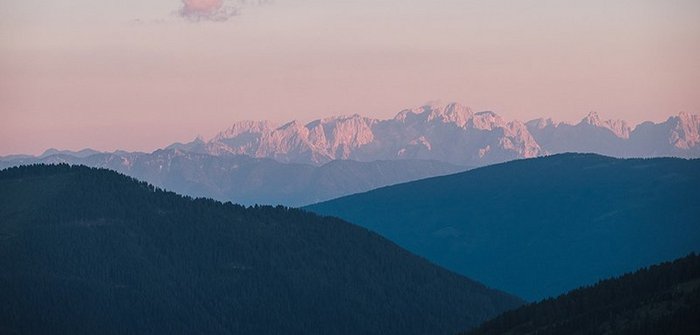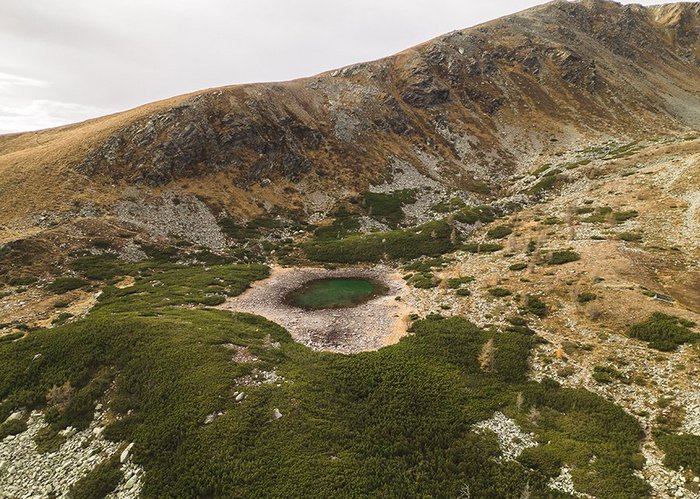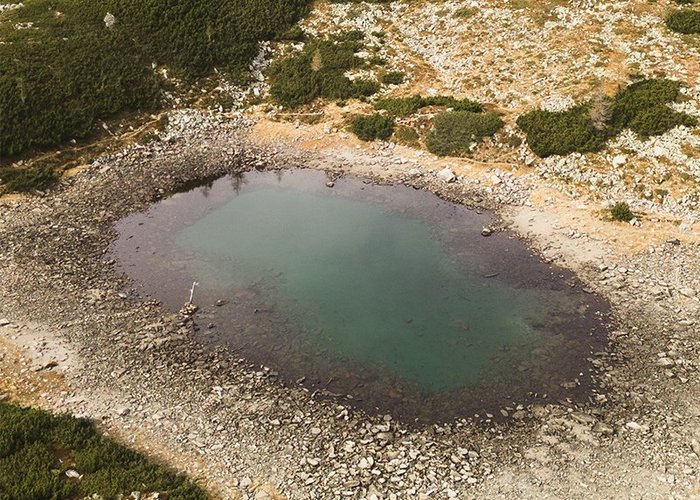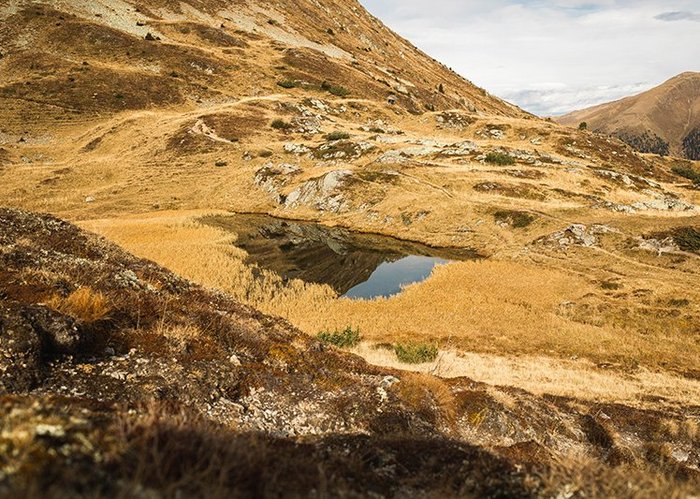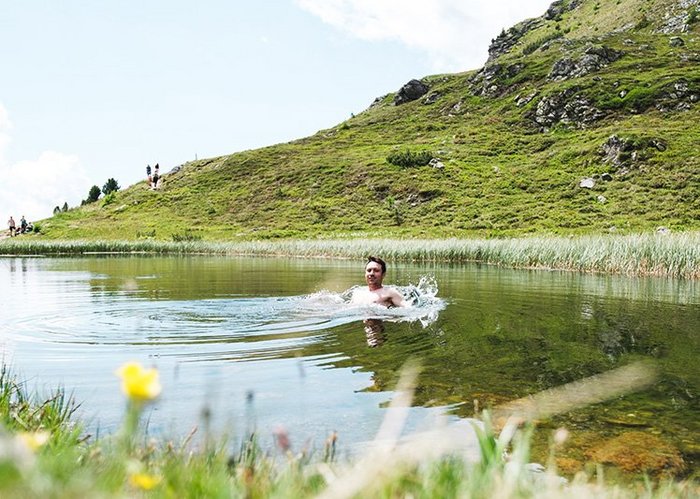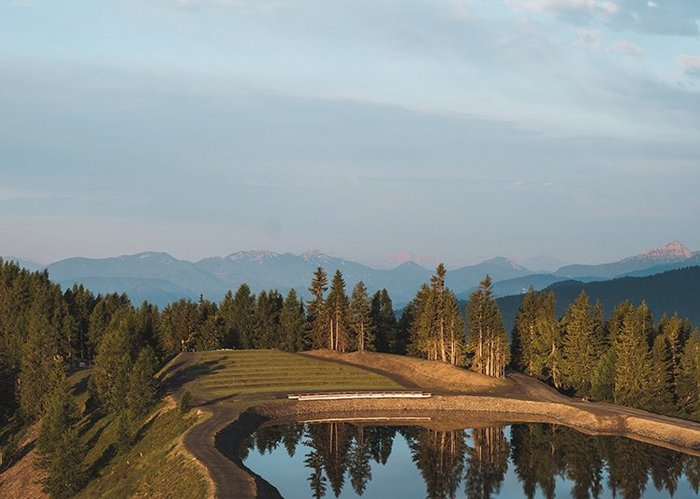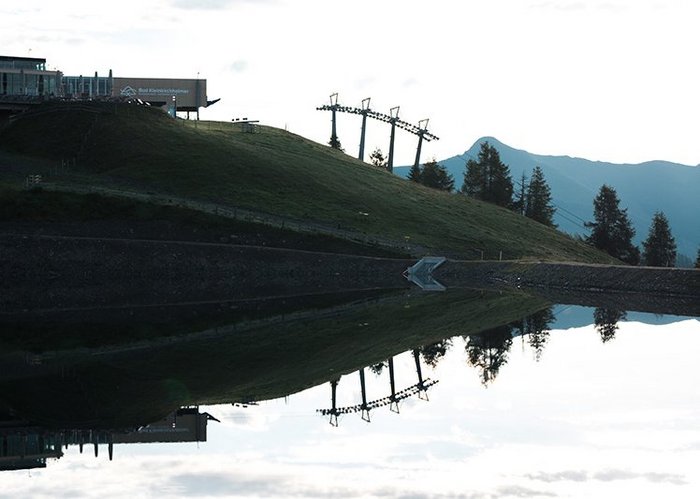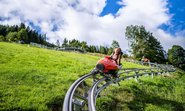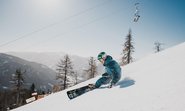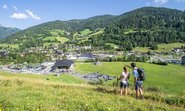Three mountain lakes surrounding the mountain station of the Biosphärenparkbahn Brunnach.
Crystal clear water, the sun’s warm rays sparkling on the surface of the water and a breathtaking view of the surrounding mountains lie at your feet. Mountain lakes have always captivated us. As a place to take a deep breath, to find peace, to savour the moment. But what is it about it that fascinates us so much? And which lakes around the Bad Kleinkirchheimer Bergbahnen are definitely not to be missed? Guest author Alex Payer takes you on an enchanting journey to the three most beautiful mountain lakes of the Nockberge.
Following the traces of the water in the Nockberge mountains.
From mermaids gone forever or miraculous connections to distant lands, legends and stories have always been an outpouring from the Alps. But what has inspired mankind to such bold ideas since time immemorial? It seems so close to us as people, and yet distant at the same time. We’re talking here about nature, and the mystical mountain lake in particular.
Why have we humans always been so fascinated, even obsessed, with lakes and bodies of water in the picturesque surroundings of the mountains? Is it the reflective surface of the water, which, without meaning to, holds a mirror up to us, or quite simply – is it the peaceful sight of a body of water against a barren mountain backdrop? I don’t think we’ll be answering this question here and now, but you can search for your very own answer to this philosophical question by going there yourself.
A mountain lake or a high mountain lake, that is the question.
The search for a definition of a “real” mountain lake poses a challenge even to expert limnologists, because it’s understandably difficult to clearly distinguish them from “normal” lakes and, from the point of view of the observer, this is probably unnecessary anyway.
It’s easier for us to point out what attributes a high mountain lake must have in order to be classed as one. Here, everything revolves around the altitude of the water body and its location above the tree line. In the Alps, this varies depending on latitude and exposure, but with the 2000m limit, you’re on the safe side and can confidently tell those at home about your visit to a high mountain lake.
The three mountain lakes around the Brunnachhöhe.
If humanity has already spun legends and stories of our mountain lakes, then it would be ludicrous if we failed to go in search of them ourselves. Assuming that the mountain station of the Biosphärenparkbahn Brunnach is our starting point and we’re motivated enough to manage hikes of up to 3 hours, three mountain lakes can be found in the immediate vicinity that are well worth discovering.
But of course, as always in life, nothing comes for free and so we have to climb a few metres to enjoy the view. But don’t worry, the ascents to the recommended mountain lakes are definitely worthwhile and will not overtax any amateur mountaineers.
1. The Pfannock Lake.
The Pfannnock Lake is not known for its size, but as we all know, size isn’t everything. It covers about 0.1 hectares and is located, as the name suggests, at the foot of the Pfannnock mountain. It itself has no direct inflow and is fed by water from the Pfannsee, which lies just above it. This lake is a karstic lake that has formed in a karstic depression on conglomerates. This already indicates how most of all mountain lakes were formed, due to glacial movements or their dead-ice blocks left behind.
Hike to the Pfannnock Lake:
As far as the ascent is concerned, the route via the rustic Oswalder Bockhütte, past the Arkerkopf and along the high trail towards Pfannnock is probably the most beautiful. After you’ve had your fill of the view of the lake, we recommend the way back via the Rote Burg and the Brunnachhöhe, from where you can enjoy an ideal view of Bad Kleinkirchheim..
Click here for the detailed description of the route!
2. The Nassboden Lake.
Less than 60 minutes separate the lovely Pfannnock Lake from our next treat for the eyes; the Nassboden Lake. So close and yet so different, this tarn lake at 2029m unveils itself to the motivated hiker. While grasses and grazed areas dominate around the Pfannock, below the Rosennock we find loose scree and dark boulders. It is precisely these that give the Nassboden Lake its mystical and mysterious character.
Hike to the Nassboden Lake:
If you take the hiking trail from here in the direction of Predigtstuhl, you will see that the lake separates into two parts. An inner, deeper section and a shore area that fluctuates greatly in its water flow and is separated by a 30 cm high rock step. This special feature is also why the lake appears significantly deeper than its measured 3 metres. Perhaps this is also the reason why some people imagine they have seen a sea monster lurking there...
Click here for the detailed description of the route!
3. The Brunnach Lake.
Admittedly, the Brunnach Lake is not a classic mountain lake, nor was it formed naturally. Well, what is it then? Less than 5 minutes from the mountain station of the Biosphärenparkbahn Brunnach, a reservoir awaits us here, inviting us to stay a while and enjoy the sun loungers. Now add the view of the Kaiserburg in the south and the Rosennock in the north and you get a truly rounded package for a beautiful stay in the mountains, without arduous ascents or excessive exertion. And for all our yoga fans out there, there is also the Mountain Yoga Trail, especially laid out in a small wood to the east of the Brunnach Lake.
With this in mind, I hope you enjoy discovering these three amazing mountain lakes.
All the best,
Alex
Instagram: alexanderpayer
Website: https://www.alex-payer.at/

